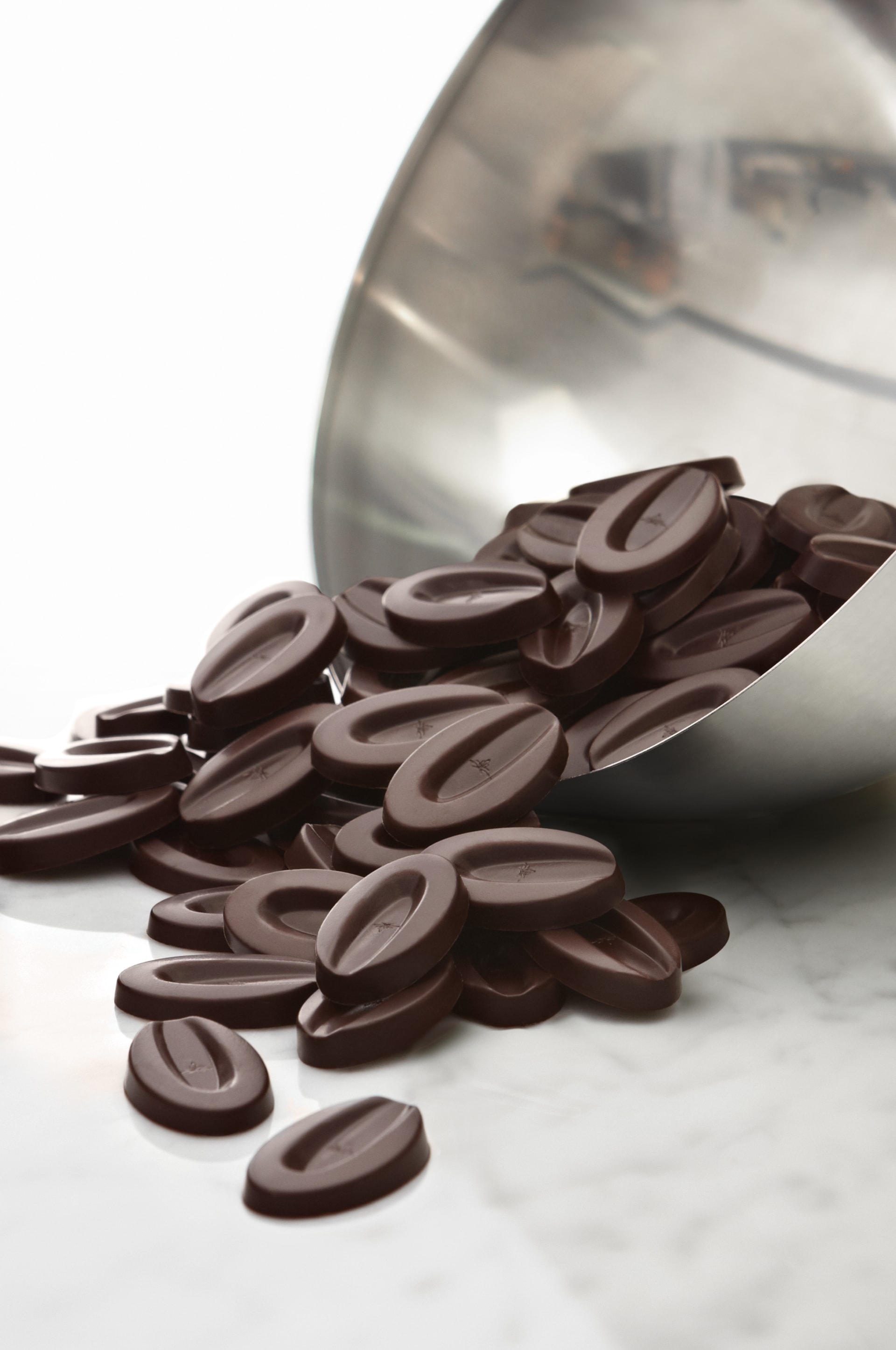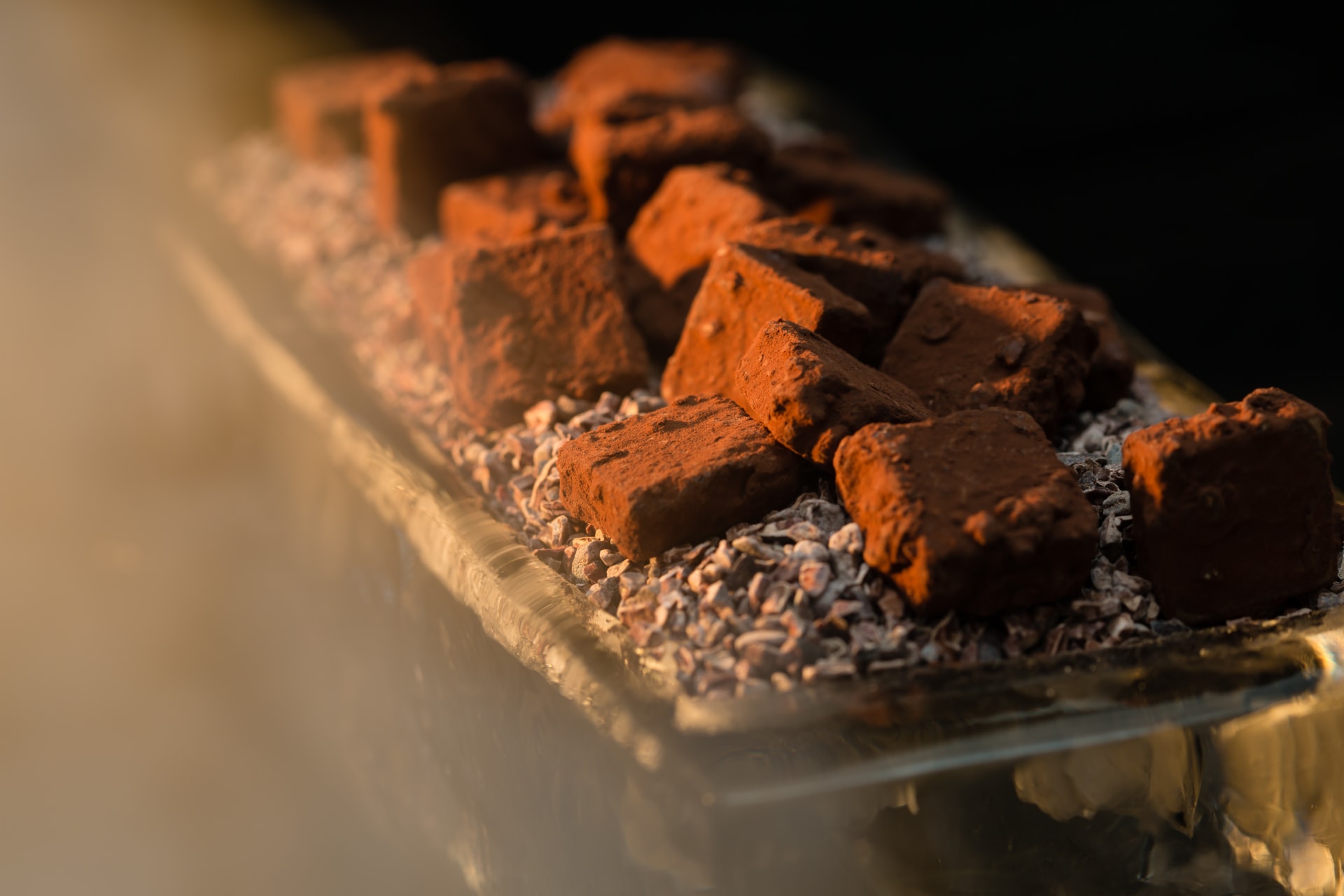You are using an outdated browser. Please upgrade your browser to improve your experience and security.
Chocolate Coating
What is a Coating?
In pastry- and chocolate-making, coating means covering a candy or other creation with chocolate. Pastry chefs and chocolatiers are very familiar with the technique, as chocolate bonbons are coated. It is therefore vital you master it.
How to coat chocolates
The holidays are coming and you want to make your own chocolate bonbons. That’s a great idea! With some good advice and quality chocolate, you will give yourself the best chance of success at dazzling your loved ones.
Coating isn’t always easy. Sometimes, chocolate gives your bonbons a matt, slightly dull appearance. There are two secrets to perfect coating:
- Controlling the chocolate’s temperature
- Using good quality chocolate (couverture chocolate)
Why should you manage the chocolate’s temperature?
By “tempering” chocolate, you make sure that your chocolate goes through three optimal temperatures. The temperature depends on the type of chocolate used (dark, white, or milk). Tempering your couverture chocolate is far from simple, and it commonly goes wrong if you don’t pick the right method.
Several things might be amiss: the chocolate might be too hot and stiff, it might have cooled too much and started to set, or it might not be fluid enough for a coating.
To temper successfully and coat your bonbons and pastries effectively, you can learn about the tempering techniques used by renowned chocolatier Frédéric Bau.
Couverture chocolate or cooking chocolate?
As we have seen, the quality of your coating depends in part on how you melt the chocolate. But tempering isn’t just a matter of technique. The product you use is just as important.
We can’t overstate the importance of using good quality chocolate such as a couverture. Unlike the bars you find in stores everywhere, couverture chocolate is specially designed and selected for both its delicious aromas and pure cocoa butter content.
Whereas a cooking chocolate will sometimes have less than 50% fat, a couverture chocolate like Valrhona’s Guanaja 70% has a much higher fat content. It’s the cocoa’s fats that give your coating its shine and fluidity, guaranteeing the perfect result.
How useful is it to chocolate-coat your creations?
In addition to giving bonbons a glossy, smooth appearance, coating gives them a slight crunch which, along with the candy’s sweetness, creates a subtle blend of flavor and smoothness that is bound to delight.
Pastry—and chocolate-making in particular—is a very sophisticated culinary art. Combined with the chef’s expert skills, the ingredients’ quality adds detail to your creations in a way that makes them truly stand out. A good chocolate coating is the perfect finishing touch for your orangettes, miniature delicacies, and bonbons.
It’s impossible to resist beautiful bonbons which, as well as having a gorgeous taste and an incomparable melting texture, have a shine and finish worthy of a professional chocolatier.
If you want to make your own homemade bonbons and coat them with chocolate, choose the right type of chocolate for your taste. Try to cover your sweets with a delicately bitter dark chocolate such as Caraïbe 66%, or pair a pure, immaculate white chocolate like Opalys 33% with smooth milk chocolate.
What can be coated with chocolate?
All kinds of recipes and desserts use coating. Chocolate bonbons are an obvious example. These come in all varieties, from salted butter caramel candies to pralinés and liqueurs.
They also include dragées; orangettes; and nuts such as hazelnuts, almonds, pistachios and peanuts, which work very well with a layer of tempered chocolate.
Truffles are the kinds of candies and biscuits that are often dipped in chocolate during tasting sessions. They are can also come pre-coated, although they are often covered with powdered (rather than melted) chocolate.


